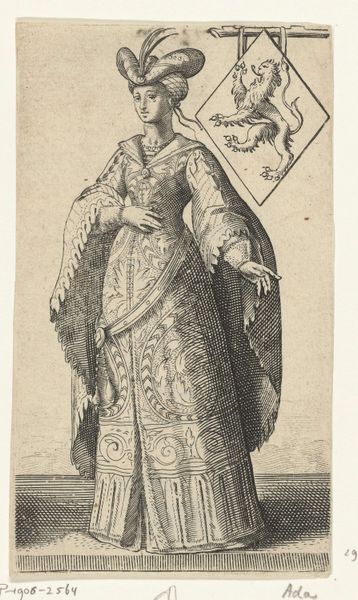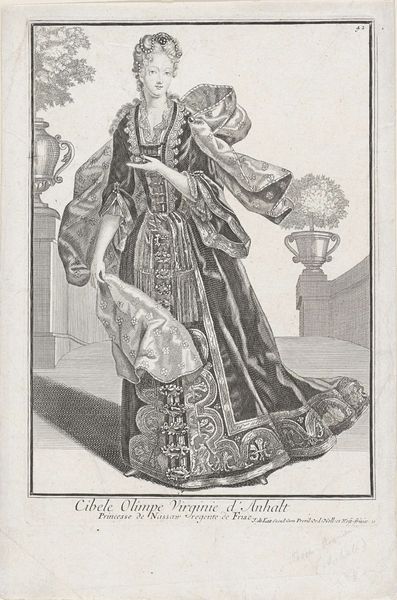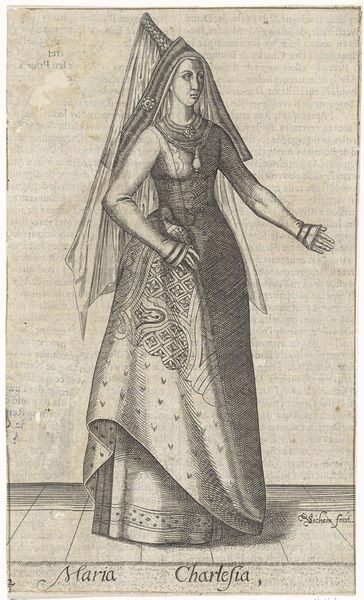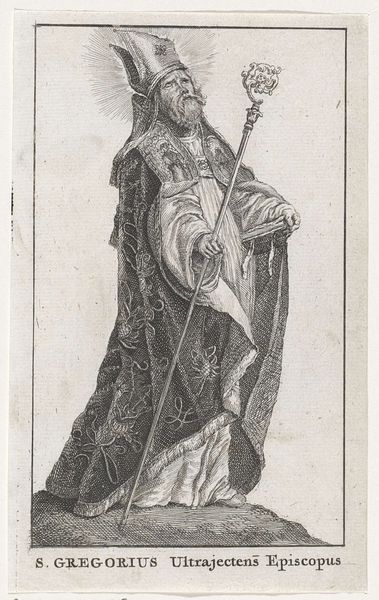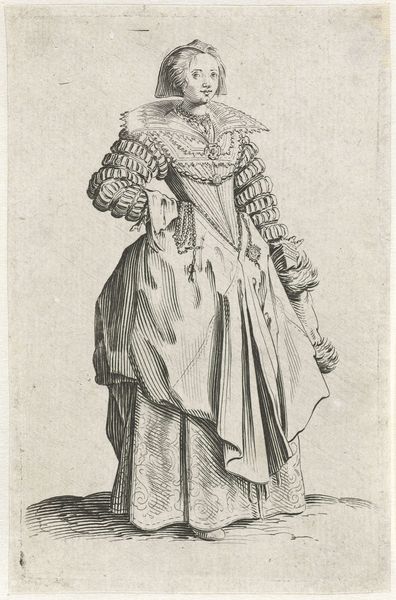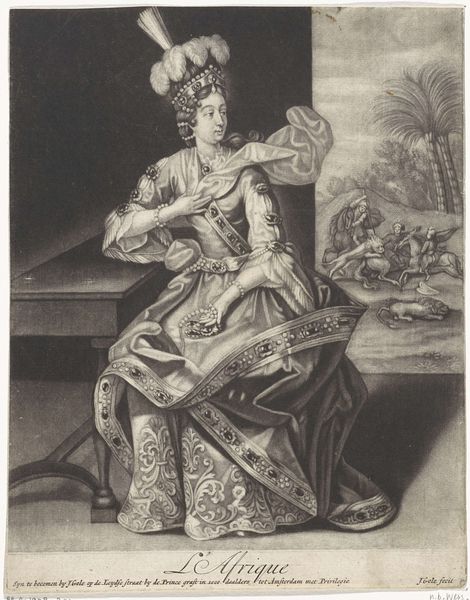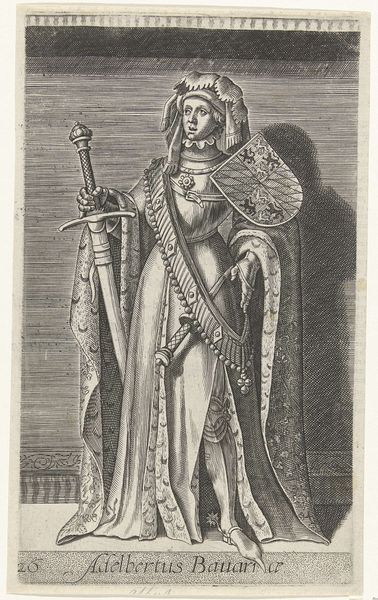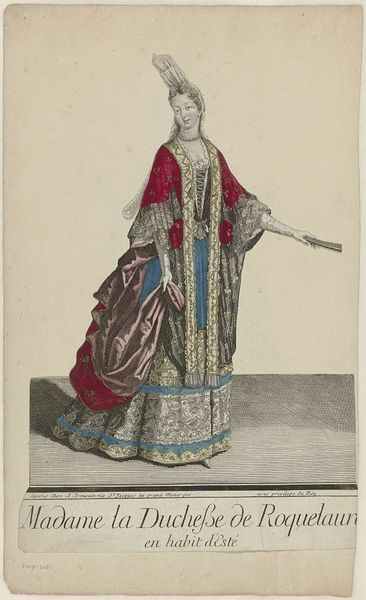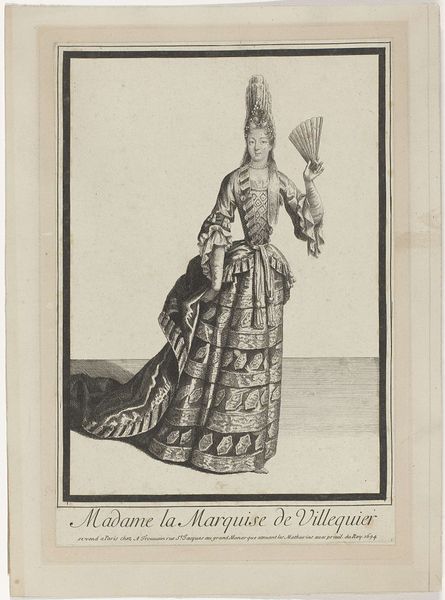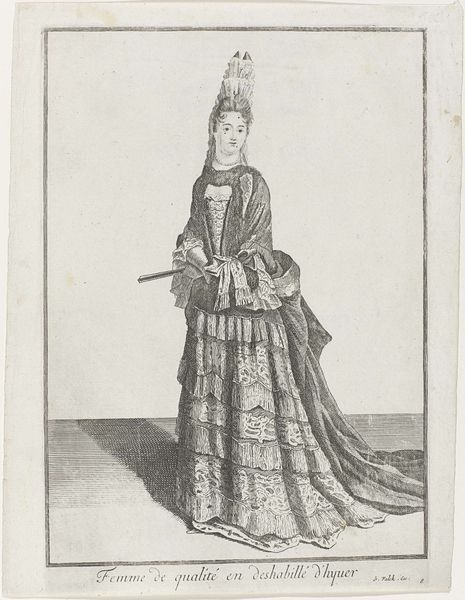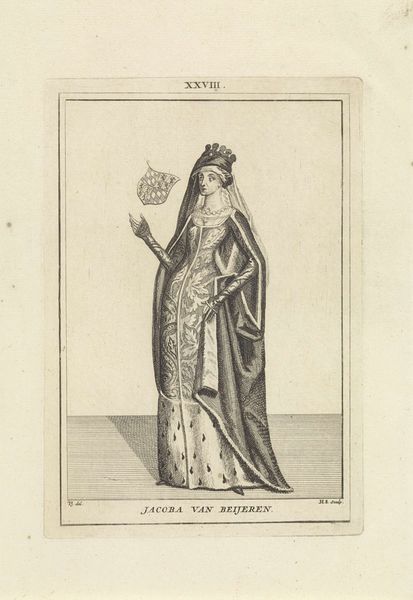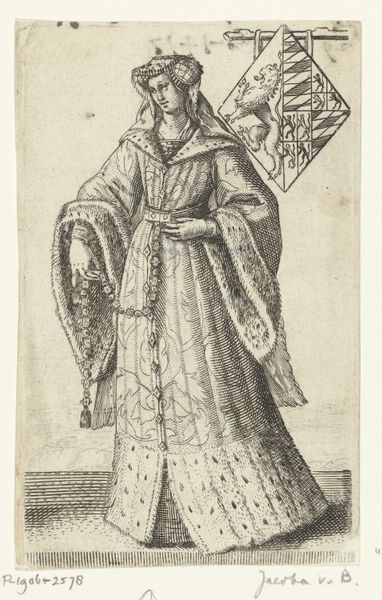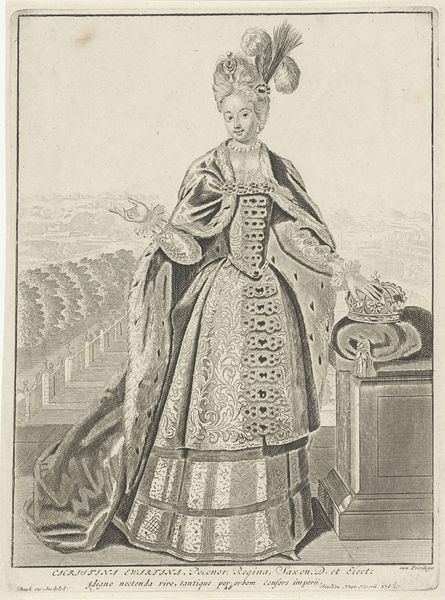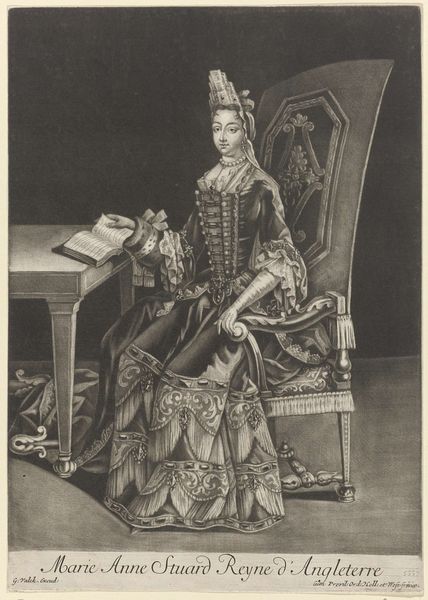
print, etching
#
portrait
#
baroque
# print
#
etching
#
figuration
#
genre-painting
#
dress
Dimensions: height 276 mm, width 187 mm
Copyright: Rijks Museum: Open Domain
Editor: We’re looking at "Vrouw met luit," or "Woman with a Lute," a print by Gerard Valck, dating from around 1694 to 1715. It's got such a theatrical flair, with the ornate dress and the lute itself, but something about her expression feels a bit detached. How do you interpret this work, considering its historical context? Curator: It's a fascinating print that speaks volumes about the cultural landscape of its time. Prints like this were often tied to social mobility and the aspiration of mimicking upper-class taste, accessible to a growing middle class through affordable reproductions. She's dressed in what someone *imagined* to be high Venetian style. But what strikes me is how that style is being consumed and replicated for a Parisian audience. Editor: So it’s less about authentic representation and more about constructed identity? Curator: Precisely. And how does the architectural setting contribute to that constructed identity? Does it reinforce the "Venetian-ness" or create a different dynamic? Editor: I see your point. The arches and the formal garden almost feel generic – a stage set for this performance of Italianità. It feels like Europe looking at itself through a filtered lens, especially France towards Italy... What seems clear is a relationship with the opera and the performance art scenes from the 17th century. Curator: Absolutely. Think about who would be consuming this image, where they’d hang it. It’s an engagement with popular culture, mediated through class aspiration and the power of reproduction. Editor: This gives me a completely new perspective! It’s so much more than just a portrait of a woman with a lute; it's a mirror reflecting the complexities of cultural exchange. Curator: Exactly! Hopefully, this exploration allows others to appreciate the intricacies embedded in seemingly simple images.
Comments
No comments
Be the first to comment and join the conversation on the ultimate creative platform.
